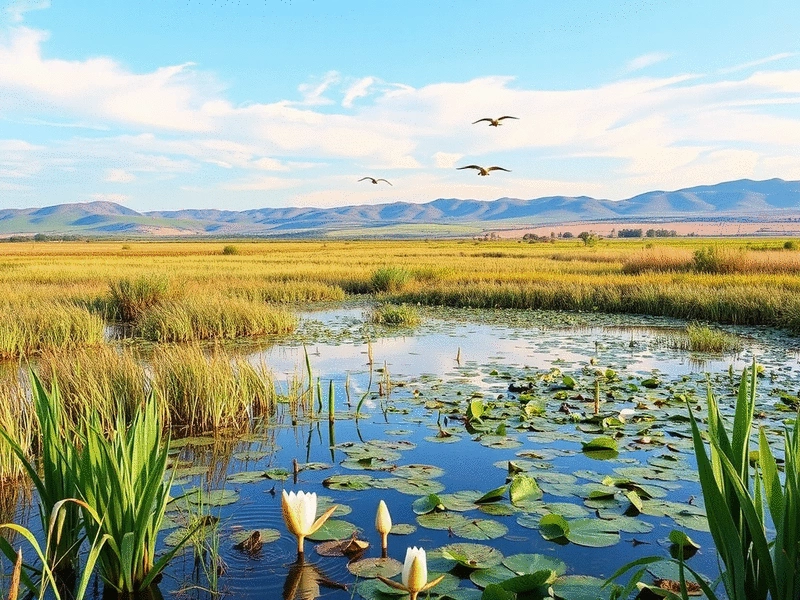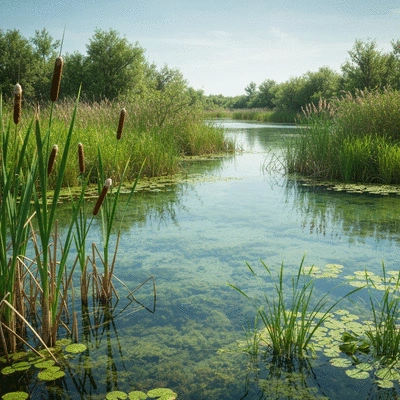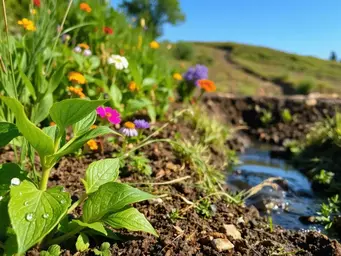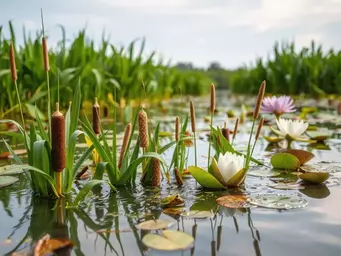1Site Assessment & Planning
Conduct thorough site assessments to identify existing conditions and develop an ecological restoration plan.
What if the future of our planet depended on the restoration of wetlands? These ecosystems are not just habitats; they are essential components of our environmental health. Dive into the world of wetland restoration and discover how these vital areas can be revitalized for generations to come.
Wetland restoration involves a systematic approach, from initial assessment to ongoing monitoring, ensuring successful ecological recovery and community engagement.
Conduct thorough site assessments to identify existing conditions and develop an ecological restoration plan.
Choose between passive or active restoration techniques based on site degradation and project goals.
Implement continuous monitoring and adapt management strategies to ensure long-term success.
Engage local communities and stakeholders to foster stewardship and garner support for restoration efforts.
Wetlands play a vital role in our ecosystem and are essential to human well-being. They serve as natural buffers against floods, filter pollutants from water, and provide critical habitats for a diverse array of species. With this in mind, understanding wetland restoration is crucial for both ecological health and our communities.
As an environmental scientist, I’ve seen firsthand the transformative power of wetlands. They are not just waterlogged areas; they are dynamic ecosystems that support countless organisms and engage in complex interactions with their surroundings. The importance of restoring these ecosystems cannot be overstated, as it significantly contributes to biodiversity conservation and climate resilience.
Wetlands serve numerous functions that benefit both the environment and society. Here are a few key roles they play:
By preserving and restoring wetlands, we not only enhance biodiversity but also protect vital ecosystem services that support human life. This connection is crucial for future generations, and it’s a compelling reason to engage in restoration efforts.
When it comes to wetland restoration, there are two main approaches: passive and active. Understanding these techniques can help you choose the right method for your restoration project. Passive restoration, for example, often involves simply removing stressors and allowing natural processes to take over, which can be effective if the area is relatively intact. For more degraded sites, active restoration techniques are often necessary, requiring direct human involvement such as planting native species or re-establishing hydrology.
Choosing the right approach depends on the specific conditions of the wetland and the goals of the restoration project. It’s crucial to evaluate these factors carefully to ensure success.
Biodiversity is a cornerstone of healthy ecosystems, and wetland restoration is fundamentally tied to conservation efforts. A diverse range of species contributes to resilience against environmental changes and enhances ecosystem stability. Here’s why biodiversity matters:
By prioritizing biodiversity in restoration efforts, we not only restore ecosystems but support sustainable livelihoods and enhance the resilience of our natural world.
When planning your wetland restoration project, consider implementing a community-based approach. Engaging local stakeholders not only fosters a sense of ownership but also ensures that the restoration efforts align with the environmental and social needs of the area. This collaborative effort can lead to more sustainable outcomes and enhanced ecological benefits.
As we wrap up our discussion on wetland restoration, it's vital to recognize the systematic approach that ensures the success of these projects. Throughout this journey, we've explored various techniques, from assessing existing conditions to implementing strategies that protect and enhance these vital ecosystems. Each step plays a crucial role in achieving lasting positive impacts on biodiversity and hydrology. For instance, the USDA Natural Resources Conservation Service provides comprehensive guidelines for wetland restoration, emphasizing the importance of careful planning and execution.
By focusing on a structured process, you can better evaluate and adapt your methods as necessary. Here are the key steps to remember:
These steps are not just checkboxes—they represent a commitment to understanding and nurturing the delicate balance of wetland ecosystems. With each project, we move closer to restoring the health and functionality of these critical areas.
At Wetland Restoration, we believe that knowledge is power! That’s why we’re dedicated to providing a wealth of resources tailored for professionals and enthusiasts alike. Whether you’re just starting or looking to deepen your understanding, we have the tools you need to succeed in your restoration efforts.
Consider exploring our comprehensive guides on:
These resources can help you navigate the complexities of wetland restoration and inspire your next project. Remember, you’re not alone in this journey—connect with our community and other practitioners who share your passion for sustainable practices!
Here are some frequently asked questions about wetland restoration, based on the topics discussed in this article:
Are you ready to dive into your own wetland restoration project? The first step is often the most daunting, but it can also be the most rewarding. I recommend starting with a clear vision of your goals and the specific site you want to restore. Assess the current condition of the area, and identify the native species that historically thrived there. For valuable insights into planning and implementing such projects, the EPA offers detailed guidance on wetland program plans, which can be highly beneficial for practitioners.
As you embark on this journey, consider these initial actions:
These steps will set a solid foundation for your project. Remember, every small action contributes to a larger goal of sustainability and ecological balance!
Don’t underestimate the value of connecting with experts and community resources! Networking can provide you with insights, support, and additional knowledge that can enhance your restoration efforts. Reach out to local environmental organizations, universities, and government agencies that focus on wetland conservation.
Here are some ways to build these connections:
By engaging with others in the field, you can share experiences and learn from one another, ultimately strengthening the collective impact of your restoration efforts.
Continuous learning is essential in the ever-evolving field of wetland restoration. I encourage you to seek out educational workshops and technical guides that align with your specific interests. These resources can equip you with the latest scientific knowledge and restoration techniques, ensuring your project is as effective as possible.
Consider looking for:
At Wetland Restoration, we are continually updating our resources to reflect the latest in ecological research and best practices. Let’s work together to restore and protect our invaluable wetland ecosystems for future generations!
Here is a quick recap of the important points discussed in the article:



 In navigating the world of wetland restoration, understanding the financial landscape is paramount.
In navigating the world of wetland restoration, understanding the financial landscape is paramount.
 Did you know that native plants play a crucial role in enhancing water quality and stabilizing soil?
Did you know that native plants play a crucial role in enhancing water quality and stabilizing soil?
 Have you ever considered the profound impact that native plants can have on wetland ecosystems? Thes
Have you ever considered the profound impact that native plants can have on wetland ecosystems? Thes
 What would happen if our wetlands disappeared? The loss of these critical ecosystems could lead to d
What would happen if our wetlands disappeared? The loss of these critical ecosystems could lead to d